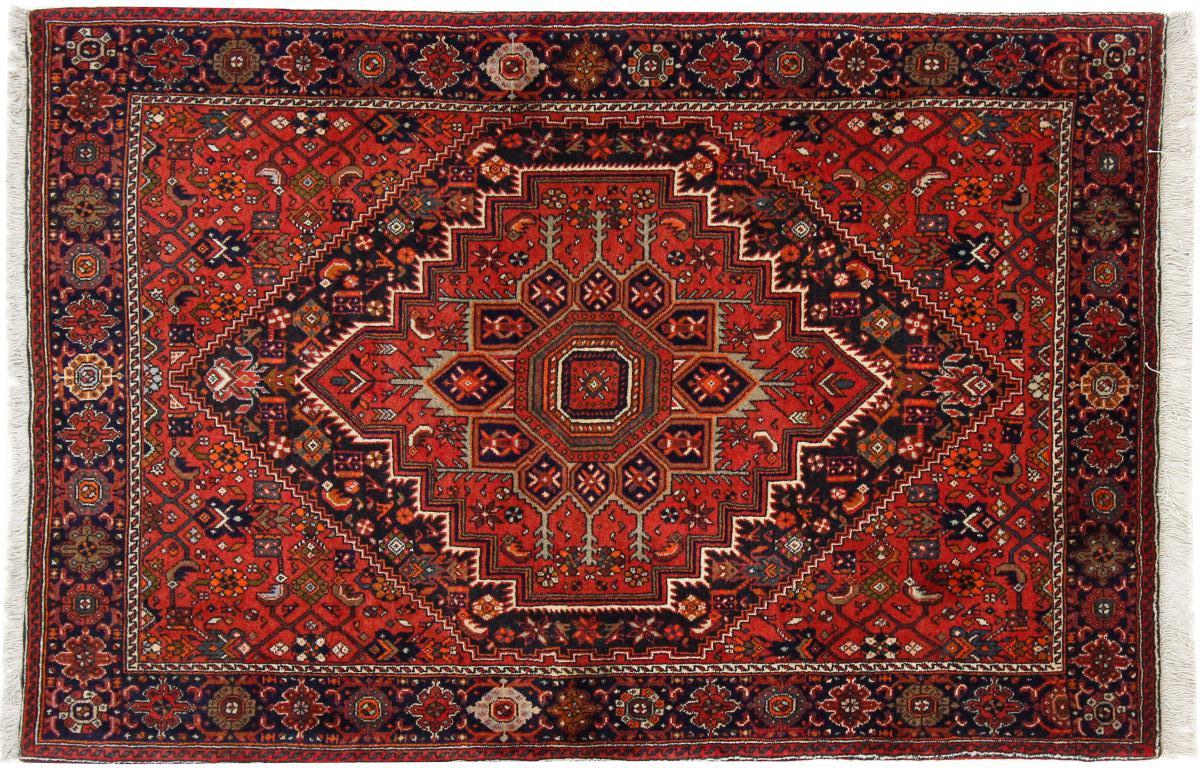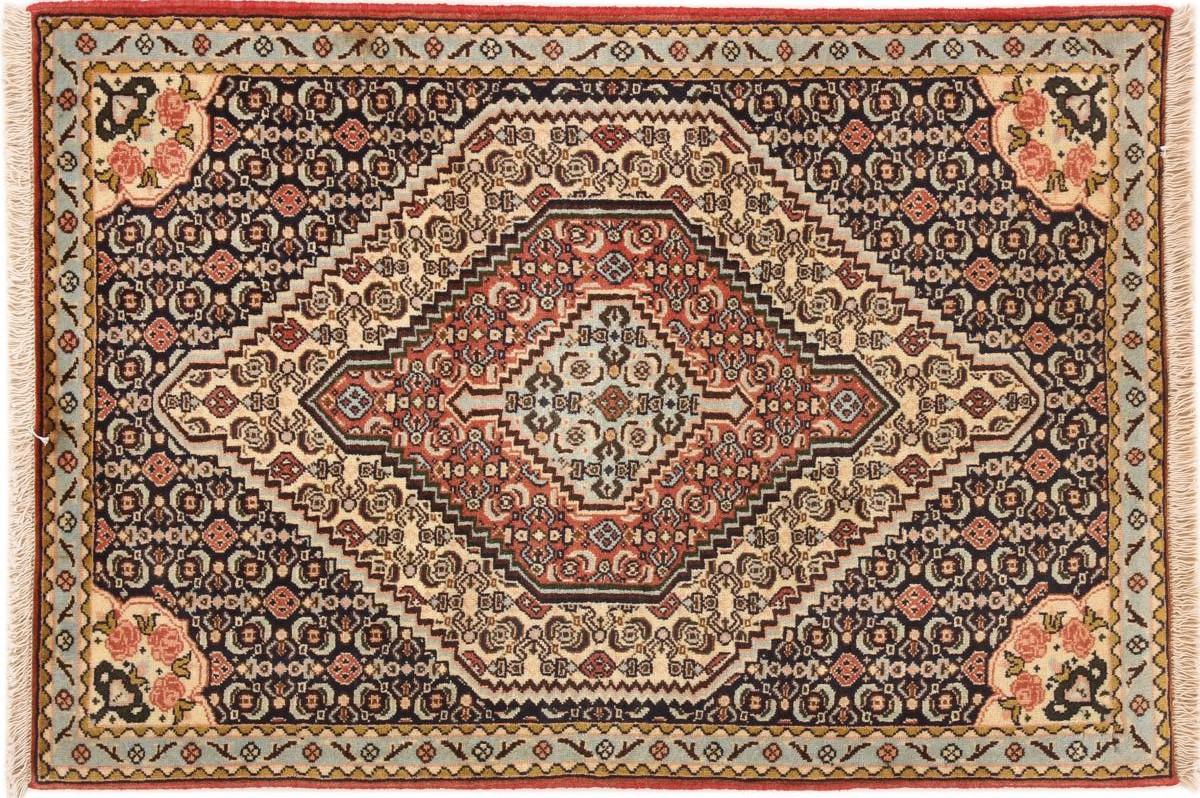Getting to know the hand-woven carpets of Kurdistan
Kurdistan is one of the oldest important centers of carpet weaving in Iran. Carpet weaving has been established as a traditional profession in this region, which has occupied people, mostly women and children, in urban and rural centers for years. And in addition to the reason for the fame of the carpet in the domestic and foreign markets, this issue has also been one of the reasons for providing people's livelihood.
Of course, it is necessary to explain that one of the first pieces of textiles discovered in Iran belongs to the 5th millennium BC in Sehgabi region of Kurdistan, which was discovered from the clay coffins containing the bodies of children, and the other one was the discovery of natural fibers in the lower floors of Ganjadera, which is 12 thousand years old. It has been wrapped into two handles of a stone ax for years. Both of these examples can be a background of the history of making textiles in Iran and of course Kurdistan. Carpets and rugs are among the material assets of every family, along with jewelry, furniture, money, animals, and livestock, and women spend part of their time weaving carpets and rugs to use it themselves and to sell it to the family economy. to help The nature and type of livestock in Kurdistan for the production of consumer wool has had a direct effect on the quality of these handwovens.
Features of the motifs in the Kurdistan carpet
Kurdish roles have generally remained the same throughout different eras, and with the passage of time and the prevailing cultural and political conditions, they have changed little, and sometimes it has led to the addition of several roles to the types of textiles and other arts of the region, but despite this, they have maintained their originality. has done Kurdistan is one of the oldest and most important centers of carpet weaving in Iran, and finally Zoq and Qariha originated from the west of Iran. During the period of short-term Ottoman rule in Kurdistan, many lootings of Kurdish property and carpets took place, which is very likely during the rule of powerful rulers, such as Qajar envoys or local feudal lords, carpet weaving became popular and the result is very valuable examples. which are preserved in museums. The carpets of Kurdistan region have characteristics with ethnic and regional characteristics that are influenced by the way of life of the people. The Kurdish weaver artist has a desire to tell what is in his heart in a simple and vernacular manner, and this characteristic has made him find a language to express his painful inner self and he cherishes and narrates the common history of his time. Therefore, all the patterns and images that have been imprinted on handicrafts, including Kurdistan carpets, include the moods and emotions of the weaver, which communicates with us through the language of metaphor, mystery, and gesture. The handlooms of different Kurdish ethnic groups and the urban dwellers of Kurdistan provinces do not have many similarities in design, color, and wefts, except for the common knot they use (Turkish knot). Therefore, the carpets of different regions of Kurdistan should always be examined separately.
The most important carpet weaving centers in Kurdistan
Among the cities of Kurdistan province, Sanandaj, Bijar, Qorve and Baneh are considered to be the most important weaving centers of this province. In a general classification, the carpet weaving of this province is divided into three categories: Sannebaf, centered in Sanandaj, Afshar weaving, centered in Saqqez, and Bijar and Gros carpets. The Afshar carpets of this province are produced by the Afshar eilots, which are located between the northern regions of Saqqez and Baneh to Sardasht and Bukan in West Azarbaijan. The role of Kurdistan carpets in different periods has been influenced by symbols, different products, especially fabrics of the Safavid period, shapes and pictures on Farangi packaging during the Qajar and even Pahlavi periods. Also, the photos of animals, plants, flowers, fabric patterns in the 18th and 19th centuries had a great impact on the carpets of this region.

Features of Sanandaj handmade carpet
In the city of Sanandaj, which is the capital of Kurdistan province, the most delicate carpets of the East have been woven since about two centuries ago. Sanandji weavers use highly twisted fibers in carpet weaving, and that is why the knot of their carpets can be seen well on the back of the carpet. The wool used in Sanandaj carpets is more of the destris type and very thin. Although the asymmetric knot is known as Persian knot or Sane (the old name of this city) among carpet weavers, Sanandaj carpets are woven with symmetrical or Turkish knot.
Knot and weave in Sanandaj carpet
As mentioned, Sanandaj carpets are one-weave type and are woven using symmetrical Turkish knot. The index of carpets in this region is usually between 25 and 35, but in silk carpets, the index reaches about 50 or 60. The wool used in carpet weaving is spun with great care and the material of the warp is also made of cotton. Of course, in some valuable old examples, silk threads in different colors have been used for weaving, and threads with different colors of red, green, blue, and yellow can be seen in the width of the carpet, which are known as "rainbow threads".
Common dimensions in Sanandaj carpet
In terms of dimensions, Sanandji weavers often weave their carpets in small dimensions, such as back, zare and half, rugs, and rarely kalegi. Carpet texture in larger dimensions is not common in this region.
Coloring in Sanandaj carpet
The colors used in Sanandaj carpet often include blue, navy, red, pistachio, ivory, gold, peach, brown and green. These colors, which polish the various and eye-catching motifs of these carpets, are prepared from the skin of fruits or tree leaves. Sanandji artists are very precise in dyeing fibers and the dyeing of carpet creams in Kurdistan is similar to other carpet weaving areas in Iran using vegetable dyes and dyeing is done in places known as dyers' quarters or dyers' quarters.
Original designs of Sanandaj carpet
Kurdish carpets have a special place both in terms of beauty and color combination and in terms of motifs. The texture of these carpets is very compact and precise, so that their durability is different from the carpets of any region, and the patterns of these carpets are also very diverse. Sometimes we also come across mythological motifs that have very ancient roots, such as the beet as a symbol of life and the motifs of wheat ears, pine trees, each of which is imprinted on handwoven fabrics in different ways. The designs of Sanandaj carpets are more geometrical, with large hexagonal designs, flower bouquets and bates. The designs that were woven in Sanandaj in the past include Mahramat, Jarseh flower, Yahya Hakimi, Cat and Mouse, Zal al-Sultani, Mina Khanum flower, Khurshid Khanum flower, Atlasi flower, Guava flower, Nightingale flower, Vakili flower, Mirza Ali flower, and The parrot, the bride and the groom, was the emerald collar. Of course, in the distant past, there were older designs such as Jakeh Badam, Qalab, Shorabi, Dog tail fish, Bee fish, Cow fish, Broken horn, Farang hat, Herat fish bergamot, Majlisi, Mehrabi, Lily and Majnoon, Gul Mohammadi, some of these mental designs Weaving was also done in this area.
Bottei's plan
The use of botte design in Sanandaj carpets is very common, and the botte design is repeated in parallel rows in the text of the carpet. Bote motifs in Kurdistan carpets are different from the Bote motifs in Qom, Arak, Kerman and Birjand carpets. In Sanandaj carpets, Naqsh Bete in the form of broken and curved branches, separately and with secondary or all-over motifs, has always been favored by carpet customers.
Herati plan
Another design that can be seen in many other carpet weaving areas of Iran is Herati, which is also seen among Sanandaj carpets. In Sanandaj, the combination design of Botei with Herati is woven in a geometric style or a hexagonal tranji and a completely exclusive border, in such a way that the background of the carpet is with Herati pattern and its border is with a large Bote pattern in such a way that the Botei are placed one after the other like a rosary bead. .
The role of trees and flowers
The patterns of trees and flower bushes are also sometimes seen in Sanandaj carpets. This design is mostly a combination of cypress, willow, and plantain trees, which can also be seen in the designs of Joshghan and Lorestan. These motifs are often seen alone in the dark text of Sanandaj carpets. The borders of these carpets are often red.
You can inquire about Buying Handwoven Carpets , Buying Handwoven Kilim and Mats, and Buying Handwoven Pictorial Rug Tableaus online from the Hoveida Carpet Store and register all your orders and Wherever you are in the world, deliver it to the desired address in less than 4 working days.
If you are interested in reading other articles in the field of Handwoven carpets or Handwoven Pictorial Rug Tableaus , please refer to Hoveida Carpet Commercial
Leave a comment
Your email address will not be published. Required fields are marked *












